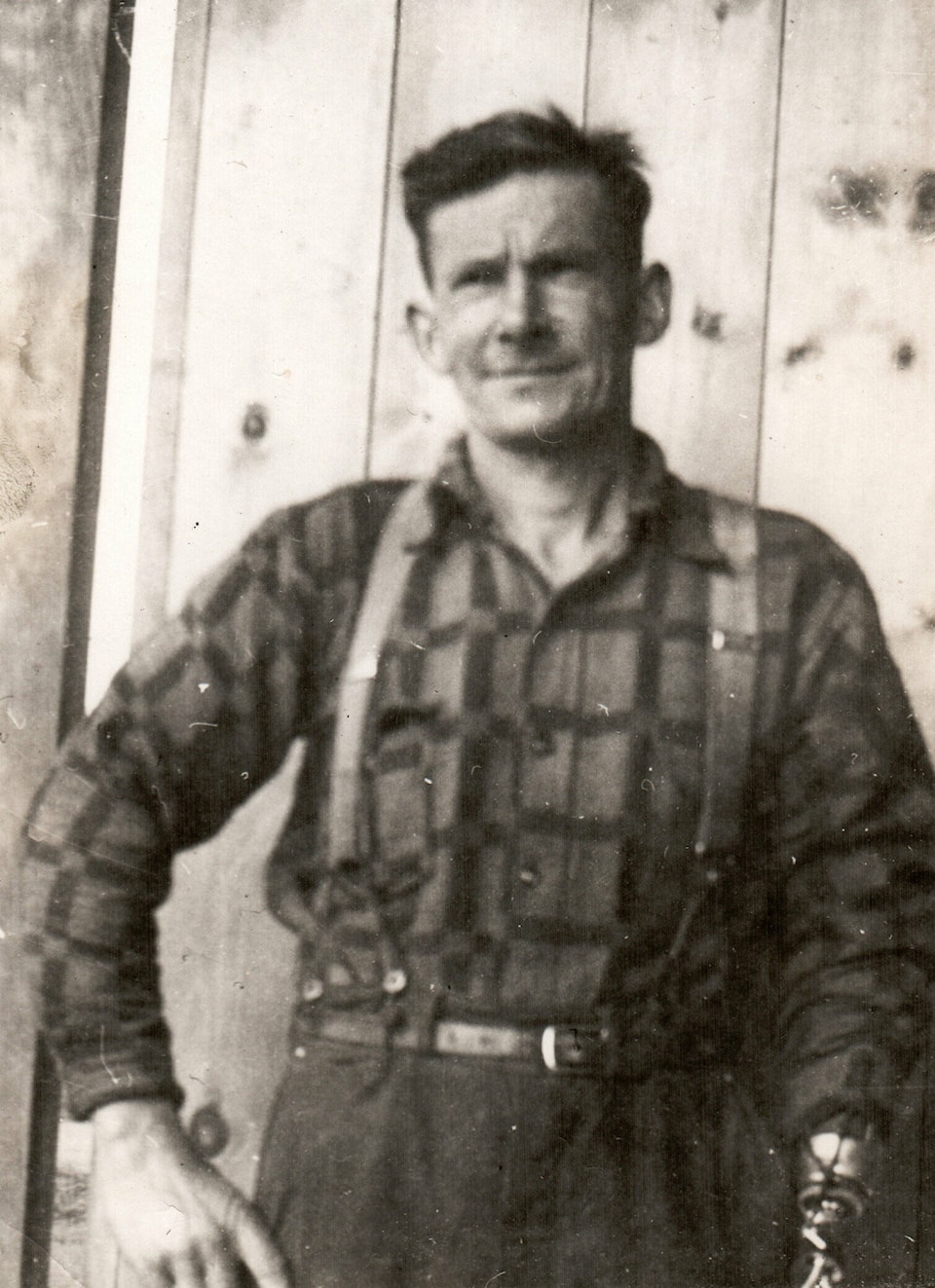During the last years of his life, Fred Paulig was a familiar figure in �������� Lake. He spent much of every day walking the streets of this community, and on good days could be seen as far afield as Boer Mountain.
Born in Berlin, Germany in the first decade of the 20th century, Paulig immigrated to Canada in 1928. It was government policy at the time to send most immigrants by rail to Winnipeg; Paulig, however, longed to see trees and mountains, so he took rode the ‘iron horse’ to Calgary.
He landed a job on a farm north of the city, and helped the landowner with spring planting. He never received a dime for his efforts, though, because when the job was complete, the farmer said he couldn’t pay him until the crop was harvested.
Paulig moved on to Vancouver, where he worked at a sawmill for a time, and then tried carpentering for the railroad. He slowly worked his way north, toiling in Loughborough Inlet on the coast and Ashcroft in the interior.
When war broke out in 1939, Paulig hitchhiked to the Cariboo, where he survived by panning gold. His average take was $2 a day; it seems a pittance now, but was enough to support him at a time when a restaurant meal cost a mere $.30.
After wintering in Quesnel (where he landed a wood-cutting contract), Fred made his way to �������� Lake. His first job here was with the Consolidated Mining & Smelting Company, and by 1941, he was prospecting with the Harrisons at Ootsa Lake.
Like most immigrants, Paulig soon found work in the woods. He landed a job hacking ties with Pete Olson at Pinkut Lake, and in one winter cut 2,000 by hand with a broad axe. The following year, with encouragement from local resident Olaf Anderson, Paulig set up a solo tie-hacking operation on the Southside near Isaac Lake. The 1,200 ties he cut on his own that first winter were floated down a creek to Francois Lake, and from there transported to �������� Lake.
A frugal man, Paulig saved his money and bought land near Lippincott Bay. He lived there alone for many years in a cabin he built himself. Due to the isolated nature of his property, Francois Lake was his primary transportation route; in summer, he used a boat to cross it for mail and supplies, and in winter, he walked across the ice.
It was during his time on the Southside that Paulig began drawing and painting. His subjects were the people and places around him, and his works ranged from landscapes to depictions of pioneer life. Some of his art still hangs in the �������� Lake Public Library.
In 1969, Paulig sold his log cabin to Ken Smith, who established one of this region’s first buffalo farms. The former tie-hacker remained in the remote area until he lost his driver’s license due to declining health, and after spending a winter with friend Hugh Cowan at Francois Lake, moved to town.
Ever creative, Paulig turned his hand to writing. Local residents enjoyed his poems and short stories, many of which were published in the Lakes District ��������. He remained active well into his ‘90s, walking several kilometers a day in and around �������� Lake.
Paulig, an independent man who lived life on his own terms, died in the winter of 2004. He will be forever remembered as a kind and gentle soul who loved the Lakes District.
© 2018 Michael Riis-Christianson and the Lakes District Museum Society



